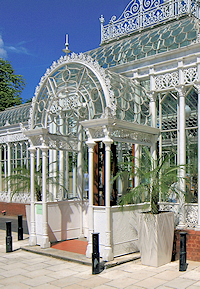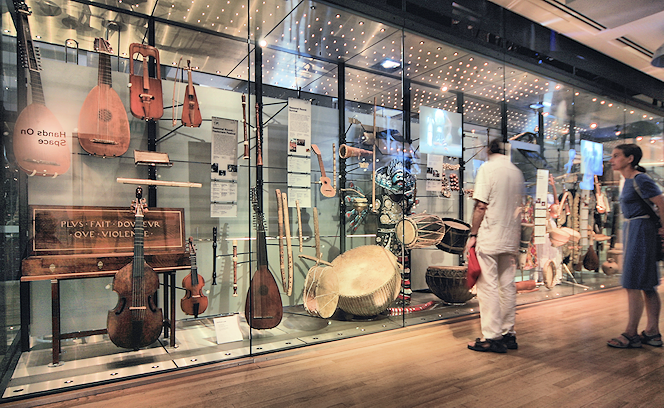Horniman Museum
Anthropology, music, natural history – and fish
Horniman Museum and Gardens, Forest Hill

During Victoria’s long reign, living standards increased across the whole population and several talented entrepreneurs made fortunes mass-marketing processed foods that had previously been affordable only to a select few. Some of these successful businessmen were philanthropically inclined and disbursed their largesse in the London area, notably the sugar magnate Henry Tate and the tea trader Frederick John Horniman, who in the 1870s assumed control of the business his father had founded.
Like the pharmaceutical entrepreneur Henry Wellcome, Horniman took a particular interest in anthropology and travelled the world amassing ‘natural, industrial and artistic spoils’. He filled his large house with his collection and, when his wife could stand the clutter no longer, the family moved out and their former home became a museum. The 16 acres of adjoining gardens were opened to the public not long afterwards. Horniman demolished his old house in 1898 and replaced it with the present purpose-built museum.
Frederick Horniman died in 1906 and his son Emslie continued to expand the museum’s collection and its buildings. On his death in 1932, Emslie Horniman bequeathed the museum to the London County Council. Nowadays it’s run as a charitable trust, primarily funded by the Department for Culture, Media and Sport.
In one way, the Horniman Museum shouldn’t qualify for Hidden London’s Guide – because it’s actually one of the capital’s most visited attractions. However, there’s a particular reason for the high attendance figures: the museum is the destination for a huge number of school outings. For most adults, the Horniman remains a lesser-known destination.
Despite its child-friendliness, this is not a dumbed-down museum. The exhibits are well chosen, tastefully displayed and accompanied by a lot of informative text, which – although written in plain English – isn’t infantilised. (Roll over the image below to get an idea of just how plentiful the text is.)
The Centenary Gallery is home to the anthropological collection; African Worlds is the first permanent exhibition in Britain dedicated to African art and culture; there’s a natural history gallery and an internationally renowned collection of musical instruments. Slightly incongruously, there’s also an aquarium, which seems to have been installed purely on the grounds that children like aquaria. Hands-on features have been added throughout the museum in recent years and you can download activity packs from the Horniman website to use during your visit.
Outside the front of the museum there’s a totem pole, carved in 1985 by Nathan Jackson, a Tingit Indian from Alaska. (There’s a picture of it on the ‘About’ page of this website). The Victorian conservatory at the rear originally graced the Horniman family home in Croydon. It was restored and reconstructed here in 1988, and is available for hire.


